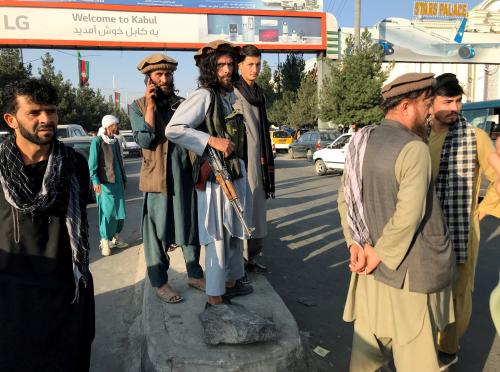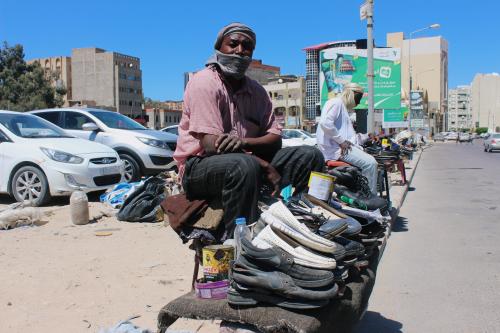It is my privilege to be with you here today to participate in the Global Launch of the United Nations Inter-Agency Consolidated Appeals for 2001. At the request of several donor Governments, this year, the launch is being simultaneously held in six donor capitals and in New York and Geneva, as well as in each affected country for which there is an Appeal. The Global Launch seeks to raise wide awareness of humanitarian needs around the world and provides an opportunity to further, at all levels, the dialogue and interaction involving the United Nations, its humanitarian partners and donors, which is critical to effectively addressing these needs.
On behalf of the UN system, I would like to express profound appreciation to the Government of Norway for hosting this event in Oslo. Norway has a long tradition of support for humanitarian initiatives including, I note with deep gratitude, the issue of internally displaced persons. The specific country situations being highlighted here today — Afghanistan and Sudan — are ones in which the Nordic countries have devoted significant attention and support.
The Consolidated Appeal Process (CAP) is the mechanism through which the UN and its humanitarian partners work together to develop, carry out and, as warranted, revise a plan for addressing humanitarian crises in particular countries. Initially employed as a means of raising funds rapidly to respond to emergency situations, the process has evolved over the years to become a coordination tool for the UN system, an expression of common humanitarian strategy, and a consolidated platform for fundraising.
The CAP is used by the UN system as a coordination tool through which humanitarian partners must jointly set goals and develop a plan to meet those goals. It is also a strategic tool, involving the prioritization of needs, a common strategy for humanitarian action and a plan to implement that strategy. It is, furthermore, a consolidated fundraising platform, where overall humanitarian needs are reflected. The entire process — coordination, joint strategy-setting and consolidated resource mobilization — is designed to enable a more efficient and effective response. It has been noted that the CAP also “must serve as a benchmark against which an operation’s effectiveness can be monitored and evaluated.”
Certainly, the CAP is an important tool for more effectively responding to the global crisis of internal displacement. For the collaborative approach being taken by the international community to be effective, a coordinated and coherent strategy is absolutely essential. The response must also be comprehensive, covering protection and assistance needs and ensuring a timely and smooth transition from relief to development for displaced and other populations.
With the exception of Tanzania, all of the 19 humanitarian crises covered by Appeals for 2001 are situations of internal displacement. Sudan and Afghanistan, which are being highlighted here today, are particularly serious situations of internal displacement. Sudan holds the unenviable distinction of being the country with the largest internally displaced population in the world. It is also one of the longest-running civil wars which tragically continues to force many to flee their homes and areas of normal residence. In Afghanistan, the plight of internally displaced persons is also tragic, all the more so as a result of restrictions on international humanitarian access to populations at risk and, recently, also on their possibilities — indeed their right — to flee outside the country in search of protection and assistance.
Throughout the world, persons displaced by conflict constitute the overwhelming majority of populations covered by the CAP — some 90 percent. While addressing the needs of all victims, special attention must be given to the particular needs and vulnerabilities of specific groups. The Inter-Agency Standing Committee (IASC), in its Policy Paper on the Protection of Internally Displaced Persons has stressed the importance of ensuring that the needs of internally displaced persons, particularly in the area of protection, are taken into account in resource mobilization.
To assist in furthering this goal, my office commissioned a study on the extent to which Consolidated Appeals for the Year 2000 supported internally displaced populations. We were pleased to find that most appeals acknowledged the special vulnerabilities and needs of the internally displaced and many individual project activities took these into account. Still, the study found considerable scope to enhance the analysis and response to internal displacement within the Appeal documents, particularly with regard to issues of protection, and put forth a number of recommendations to this end.
Copies of the report are available here today, and in September were made available to country offices then currently engaged in preparing the 2001 Appeals. A preliminary analysis of the 2001 Appeals has found measurable progress in the attention given by the CAPs to internal displacement. Still greater attention needs to be paid, however, to providing country teams with guidance on how to approach the critical issue of protection for internally displaced persons and other populations at risk. I would encourage all those Governments and NGOs represented here today to work with the United Nations in this regard. The theme for the 2001 CAP: “Women and War” also deserves our collective attention. The emphasis on this issue is most appropriate, given that women, together with children, typically account for 80 percent of victims of armed conflict and the humanitarian emergencies, including internal displacement, that they engender. Part of an already vulnerable population, women frequently experience particular vulnerabilities and have special protection and assistance needs. Violence against women, such as rape and sexual abuse, is commonly used as a weapon of warfare. Women and girls are often considered by soldiers as the spoils of war, and even everyday tasks, such as collecting firewood and water or obtaining food assistance for their families, can expose women to sexual abuse, exploitation and other risks.
Women in war also often assume additional responsibilities because men are engaged in the fighting, are wounded or killed as a result. Moreover, in attempting to adjust to their new role, women may have the added burden of challenging gender stereotypes and confronting discriminatory practices; the discrimination faced by women in Afghanistan is a particularly extreme example of what, to varying degrees, is experienced in other countries as well. In short, as the Secretary-General has noted: “From rape and displacement to the denial of the right to food and health care, women bear more than their fair share of the suffering.”
And yet, the role of women is critical to alleviating the conditions faced by entire communities in countries in crisis and in rebuilding societies torn apart by war. Though often victimized, women in war are not just victims. For, while they face overwhelming problems, they also find themselves at the centre of solutions to humanitarian emergencies. As women know best the needs of their families, engaging them in the design and distribution of humanitarian assistance is an effective strategy for targeting relief and other programmes while also empowering women and affirming their rights. When international assistance shifts from relief to development, particular attention must be paid to ensuring that women have equal access to training, income-generating programmes, micro-credit and land.
Support for women’s groups also is an important component of strategies for strengthening local capacities and rebuilding societies. Women bring an invaluable perspective to peace and reconciliation efforts: their voice must be heard. And, indeed, it was heard clearly last month in the Security Council, where the participation of women from conflict-affected countries served as testimony to the concrete contributions that women are making towards peace. Accordingly, the Council called for measures that support local women’s peace initiatives for conflict resolution and the involvement of women in all aspects of implementation of peace agreements.
The whole of Security Council Resolution 1325 on Women and Armed Conflict, which was adopted unanimously on 31 October, is of course very germane to the CAP theme. It calls upon all parties to armed conflict to fully respect international law applicable to the rights and protection of women and girls. It also calls upon all actors to take special measures to ensure their protection and particular needs during conflict as well as during processes of repatriation and resettlement, reintegration and post-conflict reconstruction. And it urges Member States to increase their voluntary financial, technical and logistical support for gender-sensitive training efforts. The CAP provides an important vehicle for implementation of this resolution so important to addressing the plight of women in war.
Last year’s theme of “Forgotten Emergencies” also must certainly not be forgotten. Many of the humanitarian crises covered by the Appeals have lasted several years and unfortunately are no longer deemed newsworthy, often fading from the attention of donor countries as a result. This is the case even in countries where emergency needs remain acute, especially where active hostilities and associated population displacement are ongoing. It is also often common in countries ready to begin the critical transition from relief to development, but lacking the requisite resources.
It is our firm belief that victims of conflict should not be further victimized by not receiving much needed support. Lack of political will to resolve a conflict must not be met with lack of concern for its ongoing victims. Instead, efforts to resolve conflicts need to be reinforced at the political level while humanitarian efforts to save lives, support community survival and establish firm foundations for sustainable development are provided. At the same time, to repeat a now common refrain, humanitarian programmes should not become a substitute for political solutions.


Commentary
Statement by the Representative of the United Nations Secretary-General on Internally Displaced Persons
November 29, 2000